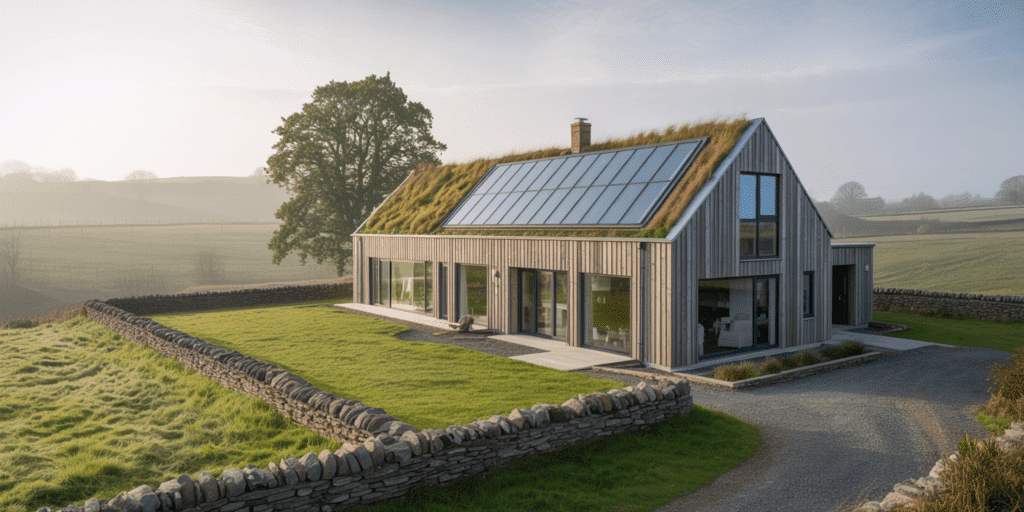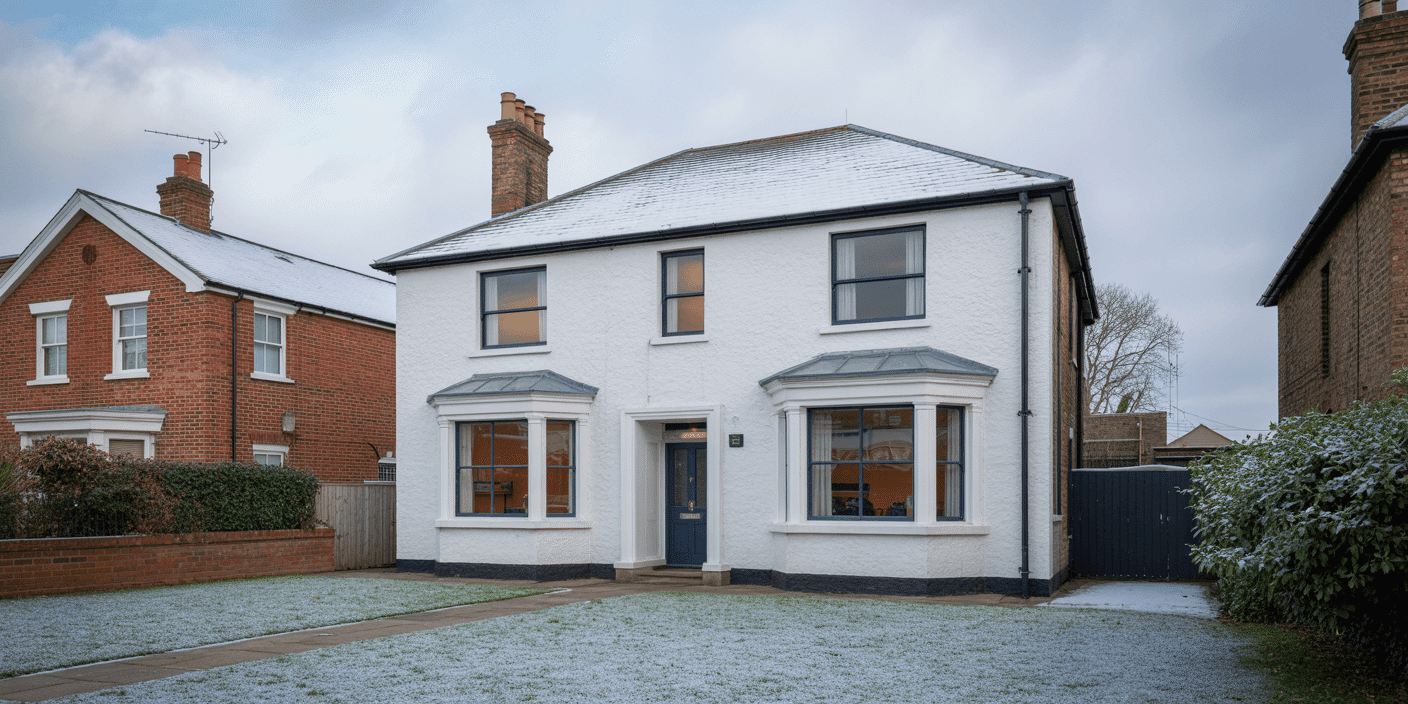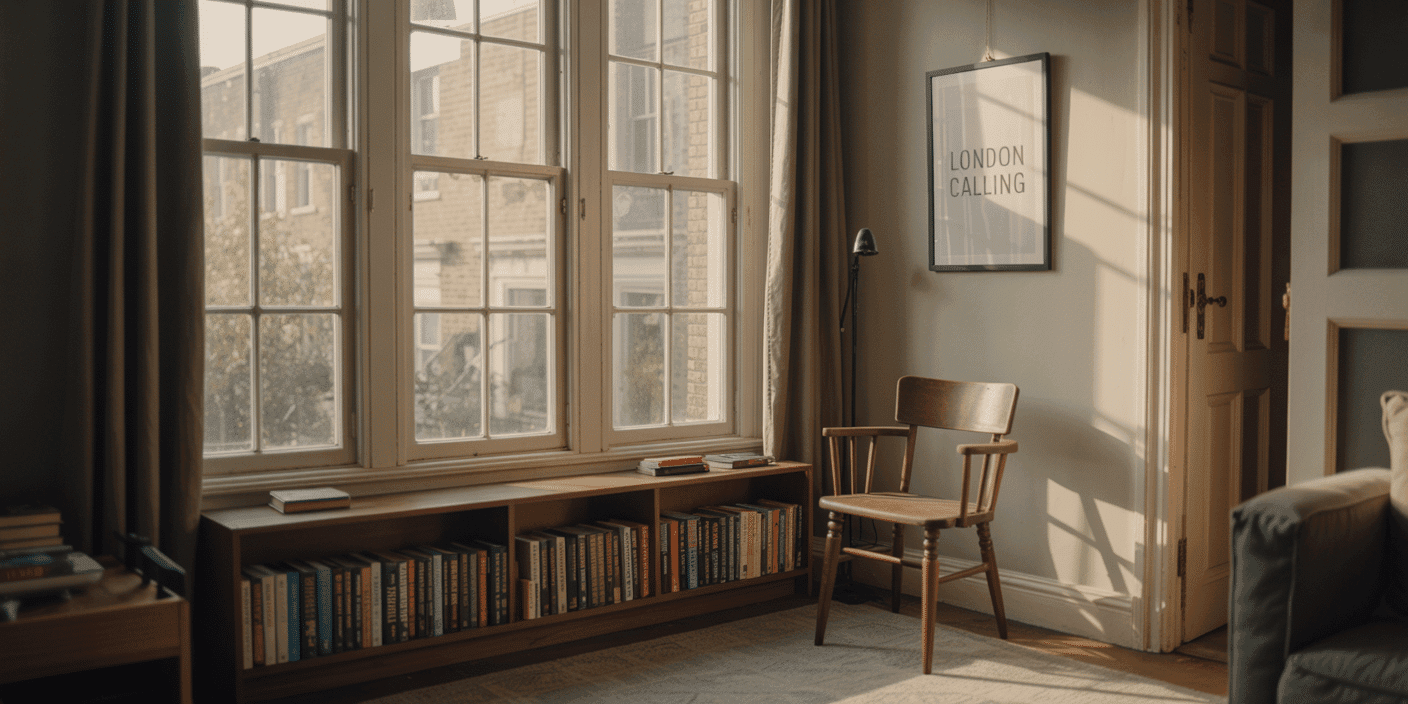The Lie You’ve Been Sold
You’ve likely heard it repeated—confidently, and without scrutiny:
“If you want Passivhaus performance, you’ll need triple glazing.”
On the surface, it sounds rational. Scientific, even.
But it’s a partial truth—and a costly one.
In reality, triple glazing alone will not meet Passivhaus standards.
In many British builds, it’s among the least effective investments when specified in isolation.
Why? Because Passivhaus is not a product label—it’s a rigorously defined, physics-based standard.
It assesses the entire thermal and airtight envelope: glazing, frames, junctions, seals, and construction integrity.
You can install the highest-spec triple-glazed unit available, and still fail your airtightness test.
What fails? Not the glass.
It’s the frame. The junctions. The installation.
And the assumption that glass alone guarantees compliance.
This is where most suppliers stop—
And where Sash Windows London begins.
While others focus on headline specifications, we engineer for real-world outcomes.
Our process begins not with the unit, but with the physics of the building—ensuring that each component works as part of a system designed to meet or exceed performance thresholds.
So before investing in thicker glazing, ask a more intelligent question:
Do you want more glass—or measurable results?
Because in a high-performance building, that distinction defines success.
What Passivhaus Actually Requires
Forget the marketing brochures and buzzwords.
Passivhaus isn’t about “eco windows” or green stickers—it’s about absolute control over heat, air, and performance.
Born from German engineering and enforced by measurable standards, Passivhaus sets one of the most rigorous benchmarks in modern construction.
And it doesn’t care how expensive your windows are—only how they perform.
To meet the standard, your windows—and the building around them—must achieve the following:
- U-values of 0.80 W/m²K or lower
(And yes, that includes the frame—not just the glazing.) - Airtightness of 0.6 air changes per hour at 50 Pascals
(If your installer leaves gaps, you’re done.) - Zero thermal bridging, especially at sills and junctions
(Common window installs fail here—silently.) - Consistent interior surface temperatures
(No draughts. No cold glass. No condensation.) - Strategic solar gain and shading
(Because overheating is just as bad as heat loss.)
This is not just a tick-box exercise. Every element must work in harmony—from the seals around the sash, to the choice of frame material, to the way the unit sits within the wall. One weak point undermines everything.
And this is where most window companies overpromise and underperform.
They sell the glazing unit as the hero. But Passivhaus doesn’t care about units. It measures systems.
That’s why at Sash Windows London, we design windows not in isolation—but as precision-fitted components within a high-performance envelope.
We understand what few do: you don’t buy your way to Passivhaus—you design your way there.
Triple Glazing — Powerful, but Partial

Let’s be clear:
Triple glazing is a powerful technology.
It drastically reduces thermal transmission. It muffles outside noise. It lifts your spec sheet and, when done properly, keeps rooms warmer with less effort.
But it’s not a magic shield.
And too many assume it is.
A well-engineered triple-glazed unit can deliver U-values as low as 0.5 to 0.8 W/m²K — precisely what Passivhaus demands. But that’s only part of the window. The rest — the part most overlooked — is what sabotages performance.
Here’s the uncomfortable truth:
Most triple-glazed windows fail Passivhaus not because of the glass, but because of everything around it.
Let’s look at what happens next.
- The frames are aluminium, unbroken by insulation. Heat leaks out.
- The spacer bars are metallic, creating thermal bridges across the pane.
- The seals are generic, unable to pass an air pressure test.
- The installation uses foam and fingers, not a certified airtight methodology.
In short, they’ve sold you the glass, but forgotten the window.
And without airtightness, thermal continuity, and junction integrity, even the best glazing is meaningless.
That’s why we approach windows differently.
At Sash Windows London, we treat triple glazing as one element in a tightly controlled system—from sash to seal, frame to fixings. Because unless every part contributes to airtight, thermally broken, condensation-free performance… you’re not building Passivhaus.
You’re just paying extra for thicker glass.
The Hidden Failure Points (That No One Quotes For)
You’ve seen the quote.
Triple-glazed windows, thermally efficient, installed to current regs.
It looks good on paper.
But it doesn’t say what matters.
It doesn’t tell you the frame’s thermal resistance.
It doesn’t explain the airtightness protocol.
It doesn’t mention warm-edge spacers, thermal bridging, or installation tape.
It’s vague. It’s incomplete. And it’s exactly why so many Passivhaus ambitions collapse at the testing stage.
Here’s what they don’t quote for—and what we do.
🔻 The Frame
Most glazing suppliers treat frames as secondary.
They’ll pair high-spec glass with cheap uPVC or cold-bridging aluminium—then act surprised when performance tanks.
Reality: If the frame doesn’t match the U-value of the glass, you’re building a thermal weak point.
🔻 The Seal
A 0.8W/m²K unit is meaningless if air whistles around it.
Passivhaus requires a level of airtightness that standard fitters can’t consistently deliver.
Reality: Without taped junctions, compressive seals, and certified installation, you’ll fail your blower door test.
🔻 The Junctions
Sills, reveals, and wall junctions—these are where heat escapes silently.
Unless they’re designed and installed with thermal breaks and continuity, you lose performance invisibly.
Reality: These aren’t optional details. They’re the difference between compliance and failure.
At Sash Windows London, we quote for the parts you can’t see—because they’re the ones that matter most.
Every frame is thermally modelled.
Every junction is designed for zero bridging.
Every install is air-sealed, pressure-tested, and backed by performance data.
We don’t sell pretty windows.
We deliver performance systems that happen to look beautiful.
And while other companies quote low and deliver leaks, we ensure your project meets standards the first time—with no retroactive excuses, and no hidden costs.
The System Approach: How It’s Meant to Work
Passivhaus performance isn’t achieved by upgrading a window.
It’s achieved by upgrading your thinking.
You don’t meet world-class building standards by shopping for thicker glass—you meet them by assembling a precision-engineered system where every component does its job, silently and effectively, without compromise.
Most glazing companies approach windows like standalone items on a menu:
✔ Triple-glazed? Tick.
✔ Argon fill? Tick.
✔ Slim profile? Tick.
But physics doesn’t work like a menu.
It works like a chain. And when one link is weak—be it a frame, a seal, a junction, or an installer with a caulking gun—everything else is compromised.
That’s why most projects that “should” meet Passivhaus… simply don’t.
This is where we part ways with the industry.
At Sash Windows London, we don’t sell windows in isolation.
We specify, design, and install full-performance systems—each one calibrated to achieve airtightness, thermal continuity, and lasting comfort.
We begin where most stop:
- By modelling how the frame interacts with the wall.
- By choosing glazing that aligns with orientation and climate.
- By specifying seals that don’t rely on a “good day on site.”
- And by working with the whole envelope team, not against them.
This isn’t window replacement.
This is building optimisation—delivered through elegance, regulation, and real engineering.
So if you’re building for Passivhaus, or close to it, ask yourself:
Do I want a window, or a result?
Because that’s the real decision.
And we exist to deliver the right answer.
When Triple Glazing Makes Sense (And When It Doesn’t)

We won’t tell you triple glazing is always the answer—because it isn’t.
Sometimes it’s the smart choice.
Sometimes it’s overkill.
And in a few cases, it’s a liability.
At Sash Windows London, we believe in engineering the right solution—not just the most expensive one.
Let’s break it down.
✅ When Triple Glazing Does Make Sense
North-facing elevations.
These receive less solar gain and suffer greater heat loss. Triple glazing here keeps thermal performance high without overheating.
Exposed sites.
If your property is in a rural, coastal, or elevated setting—subject to wind chill or long, cold winters—triple glazing can add stability and comfort.
New builds aiming for certification.
If you’re building to meet Passivhaus, Part L Future Homes, or high-performance envelope standards, triple glazing helps hit those U-values.
Noise-sensitive locations.
Triple glazing also reduces external noise—especially helpful in urban or roadside settings.
❌ When It Doesn’t
Small glazing areas.
If your windows are compact, the performance difference between double and triple glazing may be negligible.
Heritage buildings.
Many conservation areas restrict glass depth, or require slimline profiles. In these cases, high-spec slimline double glazing with warm-edge spacers may outperform visually bulkier triple-glazed units.
Retrofits with poor junction detailing.
Installing triple glazing into an older wall with thermal bridging around the reveal often leads to internal condensation—even with a high-spec unit. You’ve boosted performance at the centre of the pane, but not at the edges.
Unbalanced design.
Over-glazing south-facing elevations can lead to overheating, even with low-g solar control. Passive design isn’t just about reducing heat loss—it’s about managing energy intelligently.
Bottom line? Glazing is not a fashion.
It’s a performance material—and should be specified with the same care as your insulation, HVAC, or foundation.
At Sash Windows London, we advise based on the building, the budget, and the goal.
Not the trend.
So before you commit to triple glazing “just to be safe”—ask someone who knows what safety, comfort, and performance actually require.
Our Engineering Ethos
In an industry flooded with hollow claims, we build on certainties.
At Sash Windows London, performance is never an afterthought. It’s the blueprint.
From specification to installation, our windows are designed not just to meet standards—but to exceed them without compromise to form, fabric, or tradition.
This isn’t about overbuilding.
It’s about intelligent balance—between beauty and function, character and compliance, heritage and high-performance.
We don’t cut corners.
We don’t chase discounts.
And we don’t pretend that thermal excellence is a pane of glass with a sticker on it.
Instead, we engineer systems where:
- U-values are verified, not guessed
- Frames are thermally modelled, not just brochure-deep
- Installations are designed to pass blower door tests the first time
- Junctions are detailed to avoid thermal bridging, not hidden behind caulk and hope
But we’re not just engineers.
We’re guardians of architectural dignity.
We restore listed buildings with compliant elegance.
We modernise period homes with invisible performance upgrades.
We help developers, architects, and planners unlock compliance without compromising character.
Because we believe great buildings deserve more than good windows.
They deserve solutions that age with grace, function with precision, and serve the people within them—not just the paperwork behind them.
You may never see our work in a headline. But you’ll feel it, quietly, every winter morning… and for decades to come.
That’s our ethos.
And it’s why those who understand what’s truly at stake choose us.
Let’s Build It Properly
If you’ve read this far, you’re not here to cut corners.
You care about doing things properly.
So do we.
Whether you’re building a Passivhaus-certified home, upgrading a period property, or future-proofing a high-end renovation, there are two ways forward:
- Specify what’s popular.
- Or specify what performs.
Sash Windows London exists for those who choose the latter.
We don’t compete on gimmicks or flash discounts.
We don’t believe performance should be an “upgrade.”
And we don’t install systems we wouldn’t put in our own homes.
Instead, we work with clarity, precision, and respect for the architecture you’ve committed to improving.
You don’t need another window company. You need an engineering partner who understands the responsibility.
So if you’re building something that deserves to last—let’s get it right.
📞 Book your zero-obligation consultation
We’ll review your drawings, performance goals, and compliance risks. No sales pitch. Just straight answers, backed by tested systems.
📄 Or request our Passivhaus Performance Pack
A digital resource that explains window design, U-values, frame detailing, and installation standards—in plain English.
The standards are rising.
The details matter more than ever.
And the time to build properly… is now.
Let’s begin.







